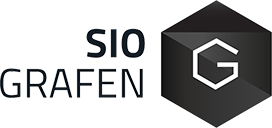GNOME 2.0 ACA
Syfte och mål
Grafenbelagda partiklar som ledande material i ACA. Dessa har tillräcklig mekanisk hållfasthet för processning i högviskösa häftämnen och god ledningsförmåga. Tillverkningen har skalats upp i volym för tester, och anisotropt ledande häftämnen utvecklats och utvärderats för flip-chip montering. En marknadsundersökning för dessa häftämnen och kompositer baserade på dessa, har gjorts. På sikt möjliggör projektresultaten ekonomisk montering av sensorarrayer med material som minimerar oönskad sekundärstrålning. Aktörer: ScandiDos, Akzo Nobel, Mycronic, 2DFab, RISE Acreo
Resultat och förväntade effekter
Projektet har utvecklat anisotropt elektriskt ledande häftämnen baserade på grafenbelagda polymerpartiklar.En våtkemisk metod för att skapa beläggningar av grafen på sfäriska polymerpartiklar har utvecklats. Metoden är skalbar. Utrustning har konstruerats och byggts för framställning av detta. En metod för att torka partiklarna och för att dispergera dessa i häftämnesbaser har utvecklats. Ett bindersystem har utvecklats för prototypmontering med de grafenbelagda partiklarna. Prototypmontering av komponenter med partiklarna visar att häftämnet fungerar som avsett.
Upplägg och genomförande
Projektet startade med att ta fram en skalbar metod för grafenbeläggning på polymersfärer samt utrustning för detta. Ett häftämnessystem med latent härdning utvecklades för att möjliggöra utveckling och beredning av ledande häftämnen, samt en metod för att dispergera de grafenebelagda partiklarna i häftämnet innan tester av sammanfogning av elektrodmaterial.

